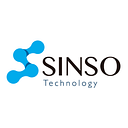Predicting the future of medical care is a tricky thing. As we mentioned in the previous article, in the era of blockchain, “hard core” has finally begun. This is an ignorant but brand new era. From Helicobacter pylori in 1982, to AIDS in 1983, to SARS that began in 2002, the latest to the present new coronavirus, new concepts and vocabulary make people feel dizzy. The world of microorganisms and viruses is also strengthening. With the Delta new generation of variant viruses, humans have generally found that microorganisms and viruses are becoming more and more resistant. It may take billions of dollars plus years to develop a new drug, but the most frustrating thing is that “we lack data” (WHO wrote in the “Global Strategy to Control Antimicrobial Resistance” published in 2001 “There is almost no real investment to deal with resistance, and there are basically no effective interventions. In view of the lack of data, we must start now”).The “we” here refers to the entire human race. If we are to establish a lofty goal in the new era, we must change the way humans use data in the medical field.
The data collaboration method of web3.0 can increase patient compliance. If there is a need for global coordination in drug resistance, then the most hygienic and defensive measures need to be followed. Patients should not take drugs when they are unnecessary, and they should not change the dosage at will. Obviously, the current interest-oriented approach is not like this. The data collaboration method of web3.0 can build an incentive model to allow more people to act in accordance with a unified goal, rather than to maximize the benefits of their own individual units. If you induce medication or abuse medical resources for the purpose of maximizing the economic benefits of the individual unit, it will not only waste but also increase the virus’s counterattack against humans (the acceleration of the mutation of the new coronavirus is particularly prominent).Once we were clamoring internally, but now there is a number one enemy, which may force us to unite, but web 2.0 does not have the soil for coordination and unity, and we are still working on our own. The first step of web3.0 medical treatment is to allow people to actively participate in the management of their own health, and the second step is to allow humans to do greater coordination at the data level. We can bind individual contributions to the overall interests of humankind, provided that there is a reasonable incentive layer based on the medical infrastructure of web3.0. The simplest example is that if we want to cast medical-related NFTs, we have to use web3.0 infrastructure. These NFTs will counteract our ecology and build a low-cost medical environment. We need to make a fuss about NFT incentives, such as our protection of medical patents and so on.
The goal of Evidence-Based Medicine (EBM) is to evaluate existing clinical research and provide patients with the best treatment based on this. (Professor David Sackett, a famous clinical epidemiologist, defines EBM as “what can be obtained by careful, accurate and wise application” The best research basis to determine the treatment measures for patients”, the core idea is: medical decision-making should be based on objective research results as much as possible.Doctors write prescriptions, formulate treatment plans or medical guidelines, government agencies make medical and health policies, etc., all should be based on the existing and best research results). If you want to avoid treatment that lacks such evidence, you must build a huge knowledge base and artificial intelligence assistance system. From the embarrassment faced by IBM Watson, we know that medical treatment is a huge challenge, and we still have a long way to go in the field of artificial intelligence. The infrastructure of web3.0 is a catalyst in the development of inquiry medicine. It can reduce the cost of advancement of inquiry medicine and combine an optimal solution in an appropriate way at present. Artificial intelligence often targets the “best” and ignores the cost. The collection of medical data samples is a natural obstacle. Modern medical care is no longer empiricism,a doctor’s diagnosis must be the result of countless people’s shoulders. Because of the obstacles to data sharing and the sluggish flow of information, we are still wandering in empiricism. If inquiring medicine is the mature, stable, and rational heart of modern medicine, then the medical infrastructure of web3.0 is the capillaries and arteries that provide nutrition to the heart.
The web3.0 infrastructure is a process of active evolution. This ecology is like the emergence of cell walls, which can be isolated or coordinated. The interests of communities and individuals are intertwined and a consensus is formed, and humans will initiate large-scale collaboration that has never been seen before. We are facing the number one problem like the new crown, don’t we need to act immediately? At every stage, medicine has ethical issues, legislative issues, and competition for interests. This is an arduous and costly undertaking. We have good soil, there should be “emerging”, which is why decentralized thinking has become particularly important in the current medical world. It doesn’t give you the answer for the time being, but it gives you a soil that may have the best answer. Web3.0 medical is not only a technology, but a new paradigm of thinking.
